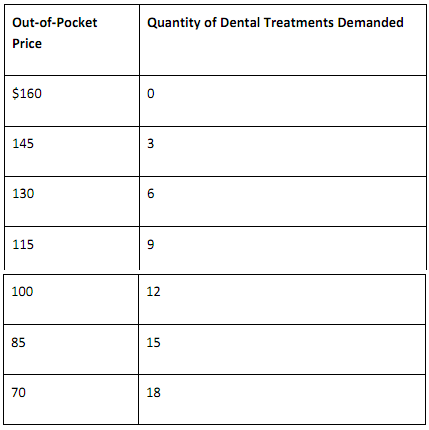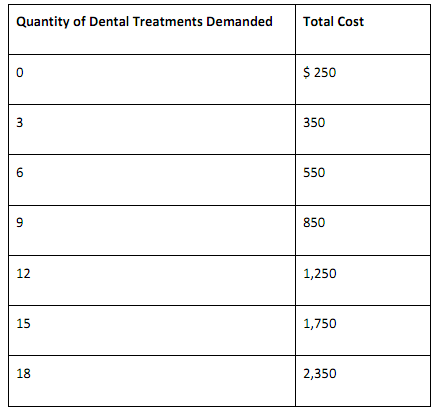1. Given a supply curve for ultrasound clinics, predict how the supply curve will shift (i.e., increase or decrease) in each of the following situations (justify your prediction in each case).
a. The technology used for ultrasound equipment has a breakthrough that dramatically lowers the cost of the ultrasound machine.
b. The wages of the clinic's support staff are increased.
c. New ultrasound equipment reduces patient examination times.
d. Local utility rates increase.
2. Predict the impact on the supply and/or demand for physiotherapy services in each of the situations described below. In each case, draw a graph that includes an original supply and demand curve as well as the new, predicted supply or demand curve. Note: You are not required to submit the graphs; however, you must indicate the supply and/or demand curve shifts, the direction of each shift, and the predicted changes in equilibrium price and quantity (increase, decrease, or indeterminate).
a. Physiotherapy services are covered less generously by provincial health plans than previously.
b. Physiotherapy professional associations significantly raise their entrance standards.
c. An aging population incurs more muscle and joint injuries that require physiotherapy treatments.
d. Events b. and c. occur simultaneously.
3. You are the manager of a health clinic that is located in a building owned by four physician partners. The clinic owners hire all the clinic staff, including doctors, nurses, lab technicians, and office staff.
a. Based on what you have learned in the context of this course, identify and discuss the decisions that would need to be made in order to efficiently operate this clinic in both the short run and the long run.
b. Discuss and classify the clinic input costs-fixed inputs and variable inputs-in the short run. Provide specific examples of both types of inputs.
4. Economic theory suggests that as plant size increases, the average cost of production should fall. However, when examining the operation of large health and medical facilities, the opposite is often the case. Identify and discuss at least two factors that may contribute to diseconomies of scale in the operation of a large urban hospital.
5. Given a demand curve for a drug that reduces the joint pain associated with arthritis, what effect would each of the following circumstances have on the demand or the quantity demanded of this drug? In each case, explain why you have predicted such a change.
a. An increase in the percentage copayment of insurance coverage, which raises the out-of-pocket price for the drug for the insured client.
b. A reduction in fees charged by chiropractors, which lowers the out-of-pocket price for chiropractic services, which are a substitute treatment for prescribing medication.
c. An aging of the population-more elderly people are experiencing joint pain.
d. A new TV advertisement convinces people that this drug is extremely effective in reducing the joint discomfort associated with arthritis.
6. Improved Access (IA), a local charity devoted to helping inner city residents, has opened a downtown, drop-in medical clinic. The space rents for $3,500 a month (including utilities), and equipment leases cost $45,000 per year. IA has hired two nurse practitioners at $7,200 a month each, and a receptionist, whose monthly wage is $3,300. Benefit costs for all staff are $36,600 per year.
Office costs, including telephone rentals are $1,500 per month. IA staff are paid on salary, which is not dependent upon the volume of patients seen. Clinic supplies are $40 per patient, and the clinic sees 975 patients a month.
Use the above information to calculate the following monthly costs for IA's clinic:
- Total Fixed Cost (TFC):
- Total Variable Cost (TVC):
- Total Cost (TC):
- Average Fixed Cost (AFC):
- Average Variable Cost (AVC):
- Average Total Cost (ATC):
7. a. Describe the assumptions of the monopoly model, as it applies to health and medical services, where price discrimination takes place.
b. Describe the assumptions of the market model, as it applies to health and medical services, where suppliers can induce consumer demand.
8. Four common bases of payment for physicians are salary, fee for service, fee per visit, and capitation. Describe the effect each payment basis has on output. Also discuss studies that have examined the relative costs and benefits of each payment system.
9. The table below indicates the total weekly costs of operating an X-ray clinic at different volumes of output (i.e., X-rays).

a. Do the necessary calculations to enter the correct amounts in the last two columns. Remember, marginal cost is defined as the extra cost of providing the service to one more patient.
b. What is the fixed cost of running the X-ray clinic? How do you know?
c. Given the fixed cost above, what is the total variable cost of providing 80 X-rays? What is the average variable cost at that output level?
10. The average total cost of operating a surgical room is $700 per case if the volume is 100 cases, and $690 per case if the volume is 110 cases. What is total cost at each of these two volumes? What is the marginal cost of another case within this range?
11. Extended care facilities are paid on a per diem basis, and they have an upward sloping supply curve. What will be the effect on supply or quantity supplied in each of the following cases:
a. a reduction in the real per diem rate paid to the extended care facility?
b. an increase in wages paid to the staff who work in the extended care facility?
c. a new cleaner that allows the extended care facility to hire fewer custodial staff?
d. a greater supply of home care services (a substitute for extended care facilities)?
12. The federal agency responsible for covering the cost of dental care for low-income seniors has set a rate of $100 for various dental treatments. In addition to these seniors, dentists have patients who pay for their dental services. The demand curve for each dentist is shown below.

Each dentist also has a cost schedule, as shown below.

a. If each dentist in this system works on a profit-maximizing basis, how many treatments will be provided to both the paying patients and to the federally funded seniors?
b. What would the number of paying patients and federally funded seniors be if the federal funding agency raised its rate to $120 per treatment?